Cannabis Nutrition: What are Macronutrients
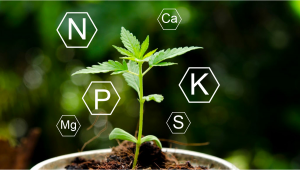
- 1. Nutrients in cannabis
- 2. What are macronutrients?
- 3. Primary macronutrients
- 3. a. Nitrogen (n)
- 3. b. Phosphorus (p)
- 3. c. Potassium (k)
- 4. Secondary macronutrients
- 4. a. Calcium (ca)
- 4. b. Magnesium (mg)
- 4. c. Sulfur (s)
- 5. Recommended amounts of macronutrients
- 6. Overfeeding and underfeeding
- 7. Ph levels for correct nutrient uptake in cannabis plants
- 8. Nutrient mobility
- 9. In conclusion
Like all other plants, cannabis needs nutrients to survive. These minerals are needed in different amounts, the ones needed in higher amounts are called macronutrients, and the ones needed in lower amounts are called micronutrients. Regardless of the amount, both of them are essential to your plant's growth. Traditionally, plants were thought to simply plunge their roots into the soil and uptake these nutrients through the simple physical process of diffusion. But how exactly do these nutrients end up in the root zone? Large steps forwards in soil science, especially in the arena of biology, have revealed far more complex living processes that underpin plant nutrient uptake and assimilation. It turns out that, just as we farm plants, plants also literally farm microorganisms within the soil that help them to obtain the key nutrients that they need to survive, thrive, and reproduce.
As you’re well aware, cannabis seeds develop into plants that conduct photosynthesis in order to create sugars and they need energy. During this process, plants harness sunlight in order to convert carbon gas into soil carbohydrate sugars. Plants themselves, of course, use a good portion of this energy to power their own cellular processes. However, they pump a surprisingly large amount of these sugars (up to 40%) and other molecules into the soil in order to attract certain microbes, such as fungi and bacteria. In return for this energy, these microbes help cannabis plants to tap into the nutrient they need; some forms of fungi directly ferry phosphorus into plants' roots, and some species of bacteria fix nitrogen from the air and make it accessible to plant cells (this even happens within the trichomes themselves).
Recent fingers also show that, through the process of the rhizophagy cycle, plant roots are able to eat entire bacterial cells, strip them down, and consume the nitrogen within. With this in mind, there is much more going on in the soil than simply applying synthetic nutrients that are directly delivered to roots. Now that you have a better idea of the ways in which cannabis plants are able to capture nutrients, you’re going to discover the role of the big three macronutrients—nitrogen, phosphorus, and potassium—in plant health and function.
1. Nutrients In Cannabis
Cannabis are living beings, and like all of us, they need food to grow. The food (aka nutrients) are delivered when you water them, through the medium they’re in. This means you’re in complete control of when and what they absorb and this is the main cause of deficiencies. Providing the correct amount of nutrients for each stage of your plant’s life cycle is the best way to avoid not only deficiencies but every other problem that can come along with it. If done correctly, the roots will absorb and transport the nutrients all the way to the top of the plant, where the new growth is developing. But for this to be done properly and efficiently, you must maintain the correct pH level.
2. What Are Macronutrients?
In cannabis cultivation, macronutrients refer to the three nutrients that the plant requires in much higher doses than all other nutrients (which are known as micro nutrients - but more on that later). When discussing macronutrients, you will see the letters NPK thrown around constantly. But what do these letters stand for?
NPK represents the elements a cannabis plant uses the most, they're nitrogen (N) which is responsible for plant growth in the vegetative stage, phosphorus (P) which helps in photosynthesis to fatten the buds during flowering and potassium (K) which is essential for terpene production.
Macronutrients are essential to your plant’s health. They are the most needed throughout your plant's life cycle and can be classified in primary and secondary. Without them, it would be impossible for your plant to fully develop and she would die as soon as the first couple of true leaves grow. This is why you need to provide the correct amount and adjust it for the different stages. The ratio of NPK should be adjusted for each specific strain, but a general guideline is 2-1-3 for vegetative growth and 1-2-3 for flowering.
3. Primary Macronutrients
The letters NPK stand for Nitrogen (N), Phosphorus (P) and Potassium (K), these are the primary nutrients a cannabis plant needs to perform the basic functions for plant growth. They are essential for your plant's health and should always be added to the solution you’re feeding your plants.
Nitrogen (N)
Nitrogen is considered the most important macronutrient of all.
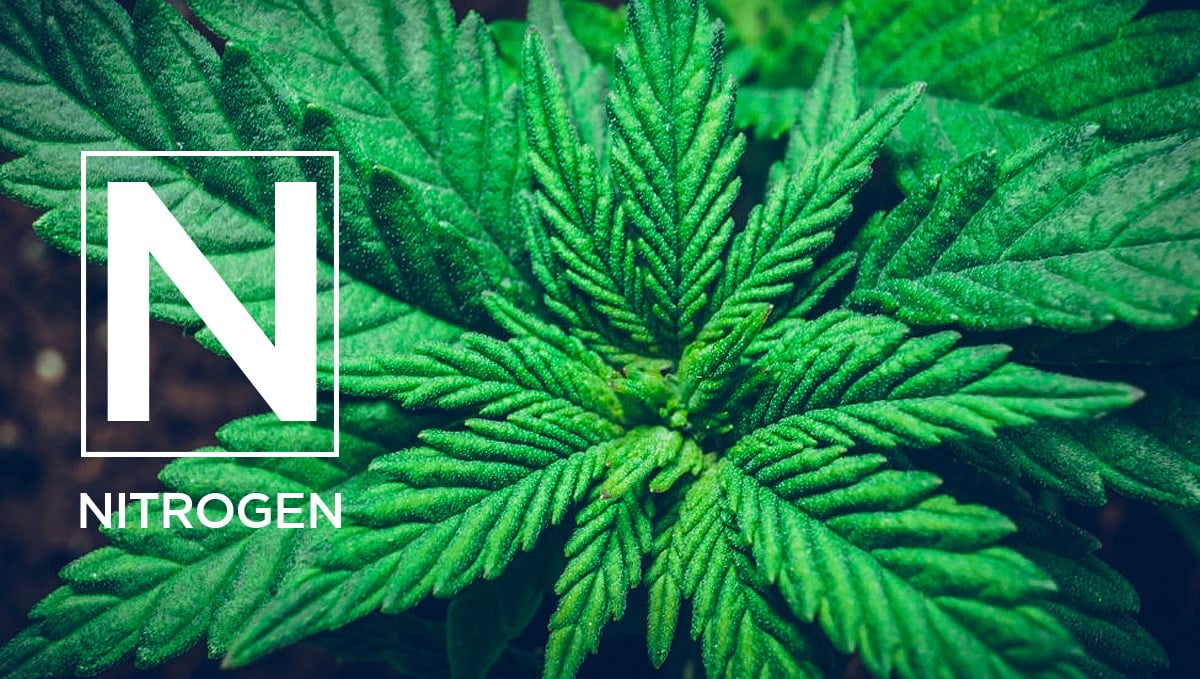
This nutrient is needed to absorb light and it is what gives the green color, allowing your plant to produce sugars essential for growth.
Phosphorus (P)
Phosphorus is another very important element because it is a primary macronutrient, it is essential for development.
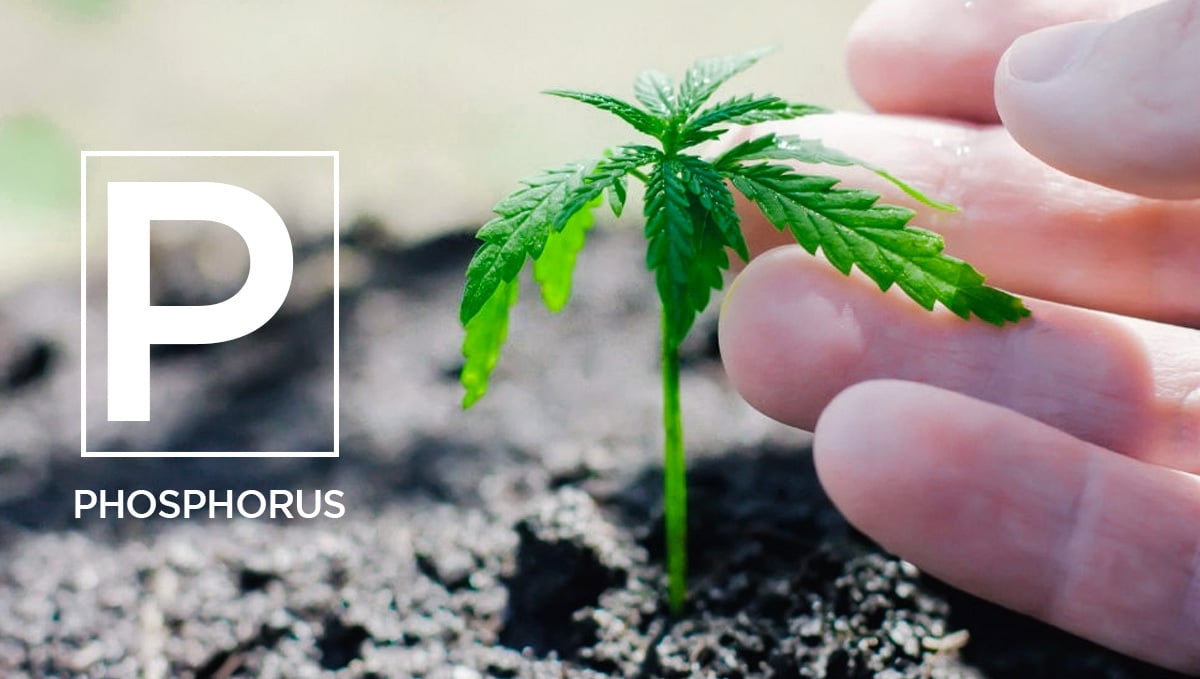
This mineral is essential for respiration, energy storage and it is responsible for allowing the plant to create and copy its DNA to the new cells of the plant.
Potassium (K)
Potassium is a crucial mineral in photosynthesis, this mineral allows the plant to “breath”.
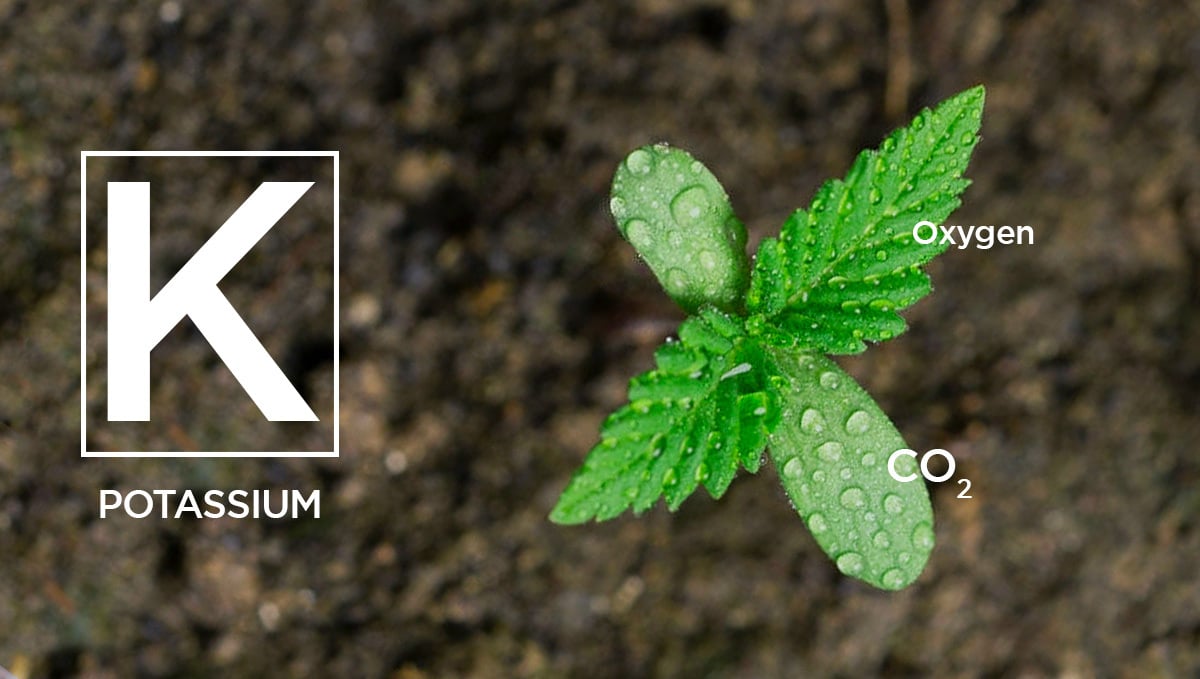
By opening and closing the tiny pores in the leaves, it regulates the oxygen that comes out and the CO2 that goes in, an essential process in photosynthesis.
4. Secondary Macronutrients
The secondary macronutrients are Calcium (Ca), Magnesium (Mg), and Sulfur (S). They are also used in abundance by the cannabis plant, but unlike the primary macronutrients, secondary nutrients are used in the structure of the plants. These nutrients can be found in tap water because it will collect minerals when it travels through the metal pipes until it reaches you. Have in mind they will not be present everywhere, as every country has different ways to treat water so sometimes you will have to provide them yourself.
Also, remember that by filtering the water you will remove all the minerals in it, so you will have to add them to your solution.
Calcium (Ca)
Calcium is very important in the structure of the cannabis plant. This mineral is crucial for developing the cell walls and membranes of the cells. Also, Calcium is responsible for allowing them to communicate so the plant can respond to the environment.
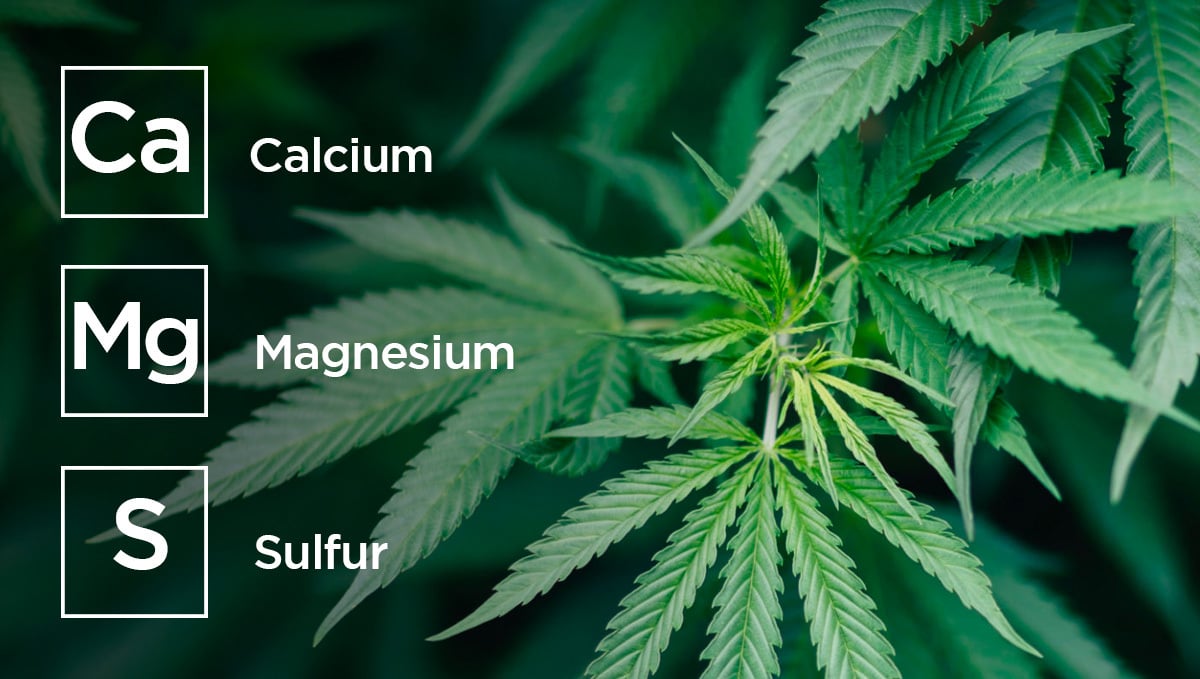
Magnesium (Mg)
Magnesium is the most important secondary macronutrient. This mineral is responsible for powering the chlorophyll molecule, without it the plant wouldn’t be able to absorb the light energy.
Sulfur (S)
Sulfur is responsible for the formation of proteins, and molecules and it’s responsible for the structure of hormones, enzymes, and cell membranes.
5. Recommended Amounts Of Macronutrients
Although the proper amount of macronutrients can vary from strain to strain, here is a general guideline for new growers. Have in mind the amounts shown should be adjusted in response to the signs your plant gives and the stage she’s in.

Note that hese numbers represent the ppm value for all the cannabis life cycle and should be adjusted according to the signs your plant gives.
6. Overfeeding and Underfeeding
As said above, the chart is a general guideline and can vary from one strain to another. The only way to measure particles per million (ppm) is by measuring the Total Dissolved Solids (TDS) with a TDS meter. The other option is to use an EC (electrical conductivity) meter. By measuring the electrical conductivity, you can also indirectly measure the TDS or the total amount of fertilizer salts in a solution.
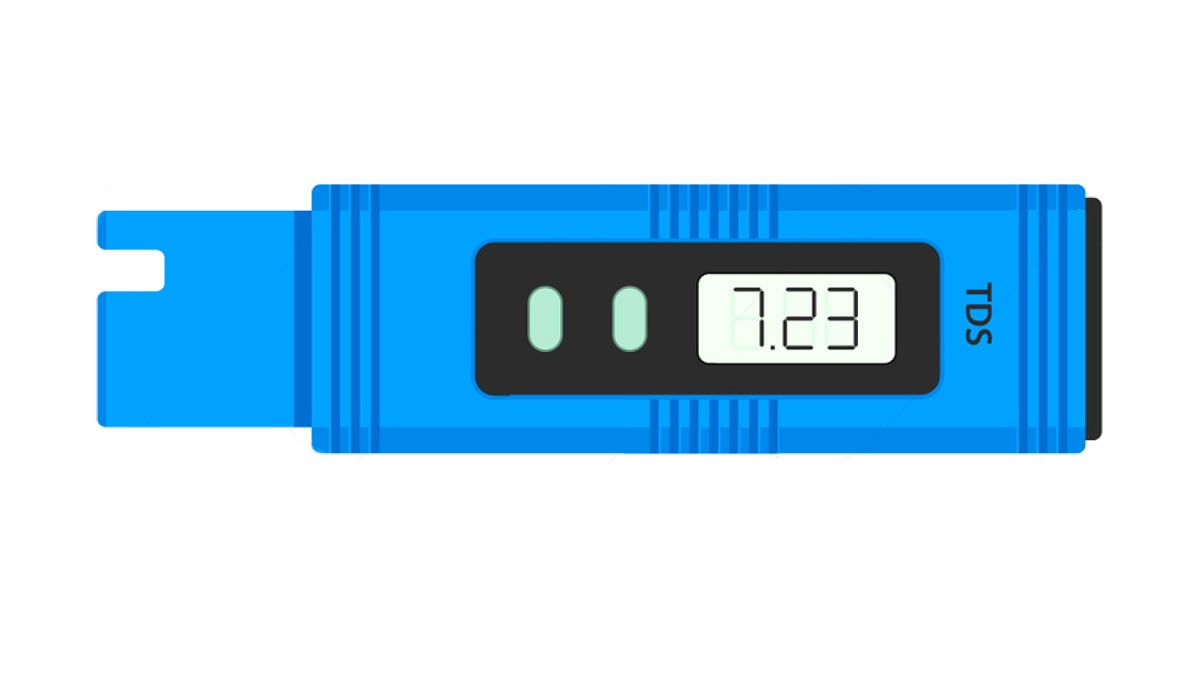
This means that if you don’t have a TDS meter, you won’t be able to measure the number of nutrients your solution has and it can cause overfeeding or underfeeding, both resulting in different signs of nutrient deficiencies.
Because of this, the best way to feed, if you don’t have a way to measure, is to start feeding lightly, see how your plant reacts (if she’s still hungry or not), and adjust according to the signs she gives. Why take the risk of under or overfeeding your plant though? If you are new to the world of cannabis cultivation, purchasing all the start-up equipment can be a bit of a steep price curve. With everything from tents, lights, fans, filters, growing medium, pumps, timers, etc. the list truly can seem a little never-ending, right? But, if you want the best chance at growing the buds of your dreams, two of the cheaper pieces of kit that are definitely needed are a pH meter and a TDS or EC meter.
Without these two meters, you are essentially growing in the dark! Without the correct levels of nutrients, and the right pH (which we will get into in the next section), you are making life for you and your ladies much more of a guessing game. Take the variables out and just buy these meters, because you are for sure going to need them.
7. pH Levels for Correct Nutrient Uptake in Cannabis Plants
It is easy as a novice grower to overlook the importance of pH in cannabis cultivation, and even easier to misunderstand. But, do so at your own risk, and the risk of your most precious plants! pH (potential hydrogen) is the measure of how acidic or alkaline a substance is. It is also directly responsible for which nutrients can be received throughout the root system, and how they are received. As a general rule, weed plants prefer a slightly acidic growing environment, but there are some differences depending on which cultivation method you are using. Soilless grows (hydroponics, aeroponics, coco-coir, etc.) all prefer a pH range of 5.8 to 6.8. If you are growing in soil, your plants will love a range of 5.5 to 6.5.
Now, although it is important to get the pH right, it is also good to let it float throughout this range. This helps the plant uptake the entire range of macro and micronutrients needed for the very best results. Keep in mind that the pH of the feed does not change the nutrient levels contained in it, only the ability of the plant to absorb these nutrients. Nutrient-producing companies do, of course, pH stabilizes their products - but the problem lies in the water itself. The pH levels in tap water vary widely from country to country, state to state, city to city, and sometimes even neighborhood to neighborhood. Luckily, there are products available from all hydro and garden centers that will help you either adjust the pH up or down.
It is hugely important to always check the pH (and TDS or EC) of your feed water before you water your plants. A good practice to get into is to check the pH of your water before adding your nutes, and again after the feed has been mixed. If the pH is wrong, the plants will struggle to uptake all those important nutrients which may cause some problems down the line.
8. Nutrient Mobility
Understanding nutrient mobility and immobility is key in diagnosing any deficiencies you may stumble upon during your growing journey. These important nutrients all have differing levels of mobility once the plant has absorbed them. Once this absorption has taken place, nutrients are transported to where they are most needed (new plant growth areas). But once they reach this first destination, they can either be easily or not so easily redistributed. This characteristic is known as the mobility of a nutrient.
As immobile nutrients are more locked into these new growth areas, deficiency symptoms will occur in new growth. Whereas with more mobile nutes, which are much more easily moved around the plant, deficiencies will more likely show in older growth areas. Mobile nutrients include:
- Nitrogen
- ChlorideMagnesium
- Potassium
- Molybdenum
- Phosphorus
Immobile nutrients include:
- Boron
- Copper
- Manganese
- Nickel
- Zinc
- Iron
- Calcium
9. In Conclusion
Macronutrients are the most abundant and needed minerals in the life cycle of a cannabis plant. Those minerals are like food for humans, they need it to produce energy and develop properly. And just like us, some plants eat more than others, resulting in a bigger plant and quicker development. If you’re new to growing, it is better to start with a resistant strain that takes a lot of nutrients easily, for this case we recommend our new Gorilla Cookie Auto.
She can take a big feeding especially from week 3 and onwards, making it hard for new growers to overfeed her. Make sure to start feeding your plant a small dose of nutrients to see how she reacts to it and then adjust accordingly.








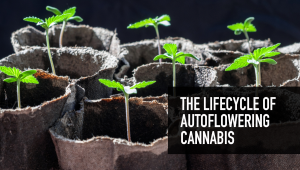
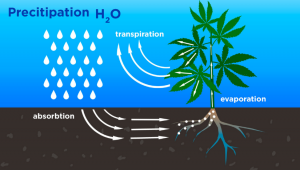
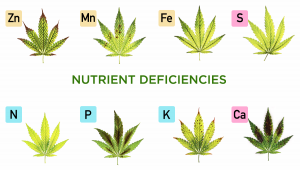
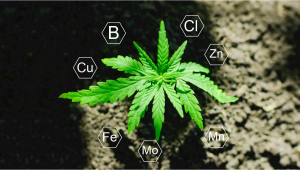


Comments